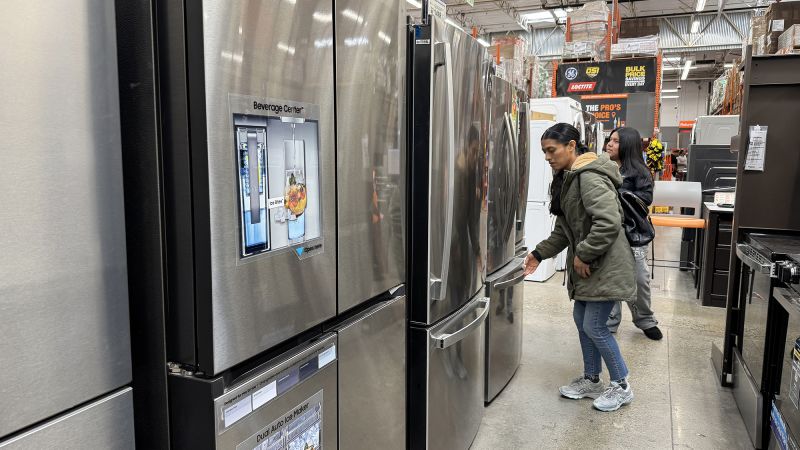CNN
—
Inflation slowed sharply in March, moving closer to the Federal Reserve’s 2% target, while tariff-induced consumer spending continued to fuel the economy.
Wednesday’s report from the Commerce Department showed that the Personal Consumption Expenditures price index — the Fed’s favored inflation gauge — rose 2.3% in March from the year before, slower from February’s 2.7% increase. On a monthly basis, prices were unchanged, versus 0.4% in February.
Economists expected the PCE price index to cool sharply to 2.2% annually in March, likely due to falling energy costs as recession fears weighed on oil prices.
That was indeed the case: Energy goods and related services costs plunged 2.7% in March. Food prices, however, saw their biggest jump in months, rising 0.5% from February.
Excluding food and energy costs, the core PCE price index was flat for the month and slowed to an annual rate of 2.6% from 3%.
Consumer spending rose 0.7% from February, marking a sharp acceleration from 0.1%.
It was the biggest monthly jump in spending activity in more than two years, Commerce Department data shows, as Americans rushed to buy products ahead of the bulk of President Donald Trump’s tariffs.
But the latest data lands at a time when uncertainty is swelling about the extent to which Trump’s massive policy moves — including a broad array of tariffs — could upend global order and the US economy.
Trump’s sweeping policies — particularly cutbacks in federal jobs and spending massive tariffs and mass deportations — have injected substantial uncertainty into the economy, rattling markets, depressing consumer sentiment, and chilling employers’ hiring plans.
The results of his economic agenda were on full display in the suite of major economic data released Wednesday morning: In the first quarter, economic activity contracted for the first time in three years and a separate report on private-sector hiring showed a precipitous drop-off in job gains.
This story is developing and will be updated.

